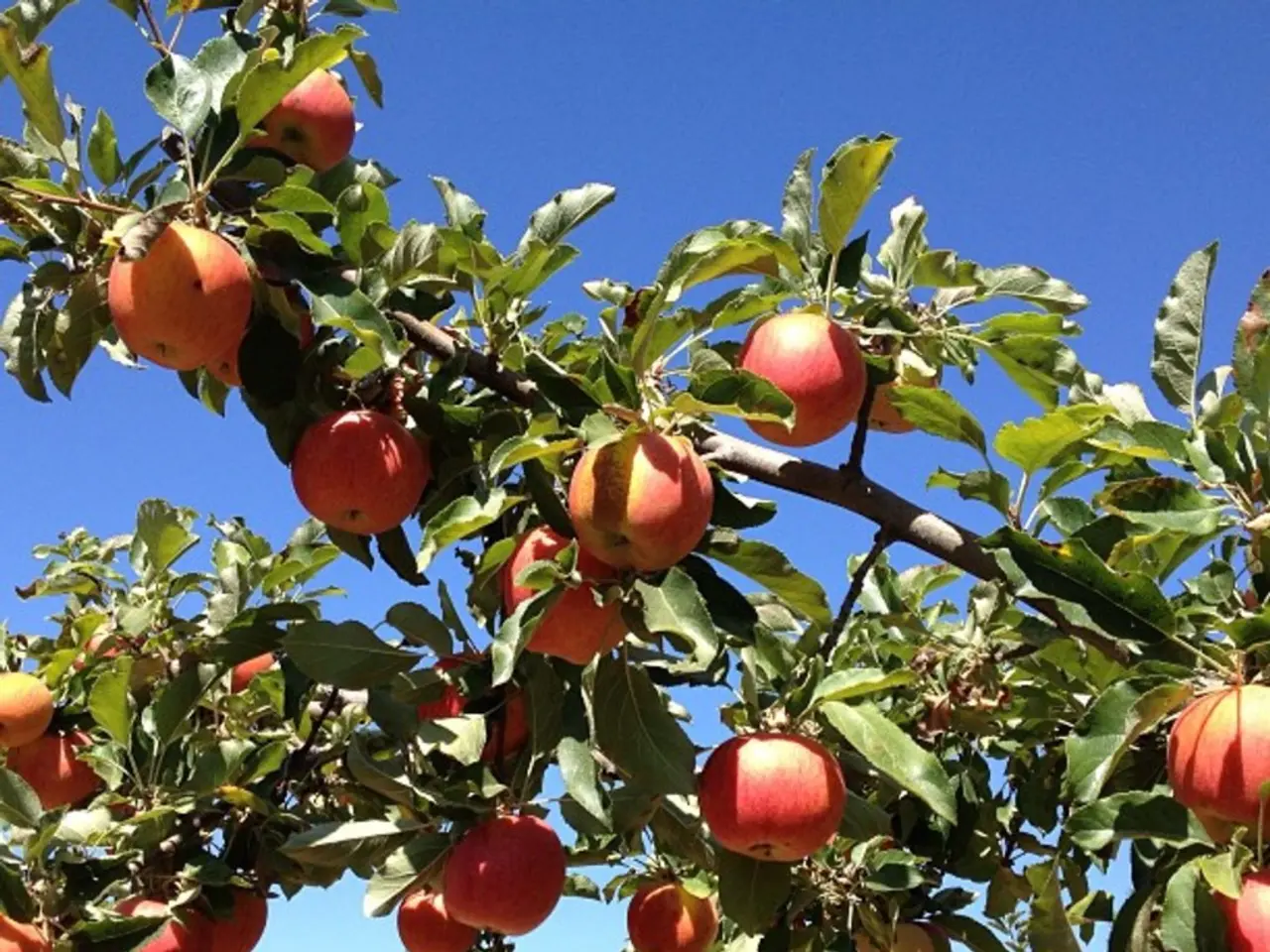Essential Facts to Consider When Cultivating Apple Trees
In the heart of every garden, the humble apple tree stands as a symbol of autumn's arrival. With a variety of flavours and textures, growing apples at home can be a rewarding experience. Here's a step-by-step guide to planting and caring for bare root apple trees.
Planting:
Choose a sunny, well-draining spot in your garden for your apple tree. Ideally, the soil pH should be between 6.0 and 7.5 for optimal growth. Prepare the soil by amending it with organic matter like compost or well-rotted manure to improve fertility and drainage.
Dig a hole twice as wide and as deep as the root system. Before planting, soak the roots in water or a biostimulant such as worm juice or compost tea to encourage beneficial microbes and reduce transplant shock. Position the tree upright in the hole, ensuring the root collar is level with the surrounding soil. For grafted trees, orient the graft union northeast to protect from sunburn. Backfill gently with soil, eliminating air pockets, and water thoroughly to settle the soil.
Watering and Mulching:
Keep the soil moist but not waterlogged, especially during the first few years. After planting, give the tree a deep watering (e.g., 5 gallons) to help roots establish, then water regularly depending on weather conditions. Apply 3–4 inches of compost around the base, then a 4-inch layer of mulch, keeping mulch away from the trunk to prevent rot.
Care After Planting:
Regular pruning improves air circulation and light penetration, which helps fruiting and disease resistance. Prune to shape the tree and remove dead or diseased branches. Protect young trunks from sunburn using tree guards or a diluted white latex paint. Monitor for pests and diseases; use organic treatments such as neem oil if needed.
Additional Tips:
Plant in a frost-free, slightly elevated area if possible to enhance fruit production. Plant bare root trees preferably in late winter or early spring while dormant to reduce stress.
Apples have a variety of flavours and textures when grown at home. Some apples, such as 'Falstaff', 'Scrumptious', and 'Sunset', are self-fertile and will fruit on their own. Specialist fruit nurseries can advise on the best rootstock for the intended use of the apple tree. Pruning an apple tree in winter helps keep it in shape, prevents it from getting too big, and encourages more fruit production.
Not all gardens have room for large 'Bramley's Seedling' trees. A 'family' tree can have over 250 apple varieties grafted onto it. Bare-root trees are best for planting, grown in a field and kept in cold storage. Soak bare-root tree roots in water for half an hour before planting. Add mycorrhizal fungi to the planting hole when planting a bare-root tree. Plant an apple tree at an angle of 45 degrees, and secure it to a bamboo cane along the main stem using rubber ties or soft string. Space horizontal wires at 60cm intervals, 10cm away from the wall or fence, with the lowest wire 30cm from the ground, for supporting and training an apple tree.
One unique apple to consider is the 'Blenheim Orange', an orange-flushed, soft-flesh cooker and eater apple. Another is the 'Egremont Russet', a nutty, fragrant, rough-skinned eating apple.
With these essential tips, you're now equipped to plant and care for your bare root apple tree, ensuring healthy establishment and fruitful growth. Enjoy the delight of homegrown apples!
- Developing a home-and-garden lifestyle can be enriched with the addition of a fruit tree, such as an apple tree, which not only enhances the aesthetics but also provides home-grown produce.
- To further diversify your home-garden, consider growing unique apple varieties like 'Blenheim Orange' and 'Egremont Russet,' offering an array of flavors and textures, promising a satisfying gardening experience.





